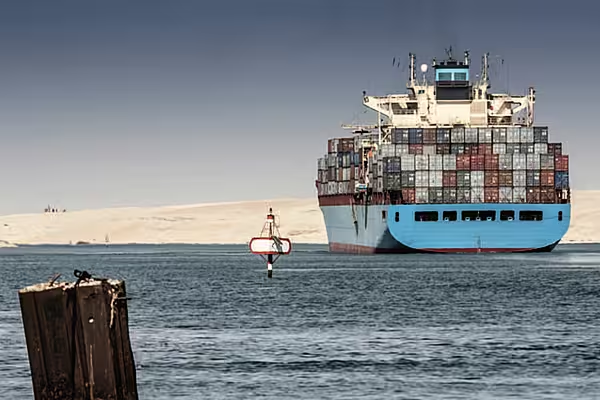David Green, director, The U.S. Sustainability Alliance (pictured), examines how suppliers Stateside are thinking differently about how to deal with the growing issue of food loss in the supply chain.
If food waste were a country it would be the third biggest emitter of greenhouse gases after China and the United States, while food produced on nearly one-third of the world’s farmland goes uneaten. This is the stark reality of food loss and waste.
Reports highlighting the facts of food loss and waste, such as the above, from the Food and Agricultural Organization of the United Nations (FAO) show that approximately one-third of food produced across the world – 1.3 billion tonnes – is lost or wasted at a cost of €600 billion ($680 billion) in industrialised countries and €270 billion ($310 billion) in developing countries.
As one of the largest food producers in the world, the United States takes tackling food loss and waste seriously. Programs are already underway to address the issue at consumer-level.
After all, more than half of all food waste in most developed countries takes place in the home.
Just last month (October 2018), The Food and Drug Administration (FDA) joined forces with the USDA and EPA under the Winning on Reducing Food Waste Initiative. This agreement aims to improve coordination to better educate Americans “on the impacts and importance of reducing food loss and waste”.
However, much less discussed but no less important, progress is also being made in the U.S. to cut food waste at the start of the supply chain, at the production level.
Reduce, Reuse
Down on the farm, farmers and growers are developing diverse ways to reduce or recycle waste.
While almonds spring to mind as a healthy and nutritious nut, consumers may not know just how sustainable the almond industry is and how committed it is to achieving zero waste production.
At the June annual meeting of the Institute of Food Technologists, the Almond Board of California highlighted its investment into recycling production co-products such as almond hulls and shells which can be used to ferment beer, boost mushroom production, strengthen recycled plastics and even supplement honey bee and insect food. The Alaska seafood industry is equally committed to minimising waste.
Not only is sustainability for fisheries enshrined in state law, but after the primary processing of their harvests, Alaska seafood producers make full use of all the leftover materials such as for pet food, fertiliser and fish oil which can even be converted into fuel. For example, the UniSea Seafood Processing Plant, Alaska blend up to 80% unrefined fish oil with 20% diesel oil to create fuel to power the production plant, saving money while reducing waste.
Across the American Midwest, soybean and maize growers increasingly turn to new technology and precision farming to reduce water, fertiliser and chemical use. Genetically modified crops help growers reduce the amount of herbicides, pesticides and diesel fuel usage in their crop production, so reducing greenhouse gas emissions.
GM technology is also helping farmers to play their part in addressing what is, paradoxically, one of the biggest areas of food waste: fresh fruit and vegetables. GM potatoes are less prone to bruising and black spots, while GM apples are non-browning, meaning they are less likely to be thrown away.
Tractors fitted with the latest technology such as GPS satellite systems allow farmers to not only map weather patterns but also to adjust their machinery to variable rate fertiliser and micro-irrigation applications. These tools help farmers match their crop needs more accurately, reducing the potential for over-use of resources as well as reducing environmental risks.
Big data helps improve decision-making while drones provide a less time-consuming way to check crops than walking through them.
Recycle
If American farmers are not able to eliminate, reduce or reuse waste then they look to recycle it. One example is the use of anaerobic digesters to produce energy from animal manure.
The first on-farm anaerobic digester to be used in Nebraska was installed on Bacon Hill Farm in Dodge, where manure from the 6,000-pig herd is processed into methane which in turn is converted into electricity through a generator. The electricity is used to power much of the farm and sold into the state public power district. Overall the annual production of 730,000 kilowatts-hours is enough to supply 53 homes a year.
Further west in Gooding, Idaho, Big Sky West Dairy Farm has used a digester since 2009 which converts manure from its 4,700 dairy cows, and a small amount of other organic wastes, into biogas. This powers two 710 kilowatt engines, which in turn produce electricity that is sold to the local utility. For both farms, these systems help to reduce farm waste management costs and methane emissions into the atmosphere.
Render
Clearing up, or rendering, slaughterhouse waste animal tissue, fats, bones and offal might not be top of mind for most people. But when it comes to dealing with food waste, the rendering industry comes into its own in ways that are environmentally friendly, economically beneficial and probably the ultimate in sustainability.
The rendering industry is one of the oldest recycling industries around. In the United States the National Renderers Association (NRA) was set up in 1933 and today its members render and recycle more than 27 million tonnes of animal by-products every year.
Without an efficient rendering industry, disposing of that waste animal material using landfills, incinerators and other disposal practices would be hugely costly and environmentally damaging.
“Rendering is a green industry”, says Mr. Kent Swisher, Vice President for International Programs for the NRA. “For every tonne of CO₂ produced by operating rendering plants, more than 7 million tonnes of CO₂ are removed from the environment. Few industries have such a small carbon footprint while having such a positive impact on the environment”.
Other benefits are the recycling of used cooking oil which is then used in biodiesel production thus helping to reduce dependence on fossil fuel. Rendered protein products from animal waste can be used for fertiliser or as a soil conditioner, providing an alternative to chemical fertilisers.
An Integrated Approach
Tackling food waste is a monumental task, and one that involves us all. While producers at the primary end of food production see advantages in reducing production waste, consumers are the end-point of the food chain and, as such, carry as much responsibility to cut food loss and waste.
Collaboration is key – particularly when you consider the huge challenge facing the food industry today: to feed a growing world population, set to reach nearly 10 billion people by 2050.
Increasing production is not enough to achieve food security. We also need to save, preserve and recycle the food we already have. And it will take complementary policies and programs across the entire food chain to provide awareness, education and action if we are to make significant progress.
About The U.S. Sustainability Alliance
The U.S. Sustainability Alliance (USSA) comprising American farmers, fishermen and foresters was formed by recognising that sustainability is not an arbitrary threshold, but rather a commitment to continuous improvement and innovation. A goal of the Alliance is to share U.S. stewardship and sustainability practices with colleagues and counterparts across the world for greater mutual understanding of resource management practices. For more information please visit our website at: https://thesustainabilityalliance.us
© 2018 European Supermarket Magazine – your source for the latest retail news. Article by David Green. Click subscribe to sign up to ESM: The European Supermarket Magazine














